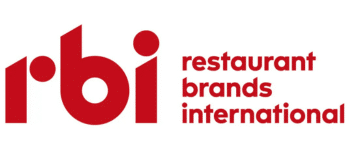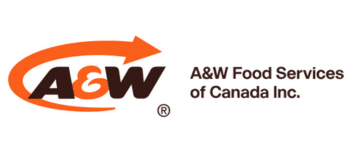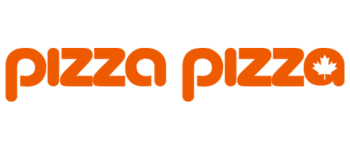Canadian Dining Standouts: Our Most Recognized Restaurant Stocks
Key takeaways
More and more consumers are looking for quicker, but healthier ways to eat. Quick services restaurants will need to adapt.
The landscape of quick-service and restaurant stocks is changing as food prices are materially higher than pre-pandemic.
Most restaurant stocks here in Canada focus on returning profits back to shareholders
3 stocks I like better than the ones on this list.The fast food industry is continually growing here in Canada. Consumers love to dine out, whether it be in a restaurant or at their favorite burger joint.
These businesses, particularly the ones that focus on quick-service restaurants, are somewhat recession-proof. As times get more difficult, when consumers choose to eat out, they gravitate towards fast food joints.
As a result, these Canadian stocks can be a stable, defensive option for Canadian investors.
Most of the ones trading on the Toronto Stock Exchange pay dividends, and the royalty structure of a few of these Canadian restaurants we go over in this article is specifically designed to return the vast majority of their income to investors via a distribution.
With that said, let’s dive into the best restaurant stocks in Canada to own today.
The Top Restaurant Stocks in Canada for 2025 and Beyond
What are the top restaurant stocks in Canada?
Canada’s Largest QSR Company
Restaurant Brands International (TSE:QSR)

Restaurant Brands International is one of the largest restaurant companies in the world, with over $40B in systemwide sales across a footprint that spanned more than 30,000 restaurants and more than 100 countries. The firm generates revenue primarily from retail sales at its company-owned restaurants, royalty fees and lease income from franchised stores, and from its Tim Hortons supply chain operations. Formed in 2014 after 3G Capital’s acquisition of Tim Hortons International, the RBI portfolio is split among Burger King, Tim Hortons, Popeyes Louisiana Kitchen, Firehouse Subs, and international franchise units of those banners
P/E: 19.8
5 Yr Revenue Growth: 8.5%
5 Yr Earnings Growth: 6.1%
5 Yr Dividend Growth: 3.0%
Yield: 3.8%
Canada’s Fastest Growing Burger Joint
A&W Food Services (AW.TO)

A&W Food Services of Canada Inc is a burger QSR chain in Canada. Its A&W restaurants feature trade-marked menu items such as The Burger Family, Chubby Chicken, and A&W Root Beer. The company was formerly an income fund, but the two companies merged to create a quick-service restaurant corporation structured similarly to QSR in order to give investors exposure to the bottom line profits of the business instead of just the top line revenue.
Because of the new corporation and its short publicly-traded life, we don’t have any scoring data or metrics on the company.
P/E: –
5 Yr Revenue Growth: –
5 Yr Earnings Growth: –
5 Yr Dividend Growth: –
Yield: –
Canada’s Most Diverse QSR
MTY Food Group (TSE:MTY)

MTY Food Group Inc is a franchisor in the quick service and casual dining food industry. Its activities consist of franchising and operating corporate-owned locations as well as the sale of retail products under a multitude of banners. The company’s operating segment is based on geographical regions namely Canada; and U.S. and International, which earns maximum revenue. The company brands include Cafe Depot, Country Style, Croissant Plus, Cultures, Extremepita, Fabrika, Jus Jugo Juice, Koya Japan, ManchuWok, Muffin plus, Valentine, Van Houtte, Shushiman and others.
P/E: 81.9
5 Yr Revenue Growth: 16.0%
5 Yr Earnings Growth: -20.0%
5 Yr Dividend Growth: 11.2%
Yield: 2.8%
Canada’s Cheapest Pizza Chain
Pizza Pizza Royalty Corp (PZA.TO)

Pizza Pizza Royalty Corp through its subsidiary, Pizza Pizza Royalty Limited Partnership, owns and franchises quick-service restaurants under the Pizza Pizza and Pizza 73 brands. It receives the benefit of Pizza Pizza Royalty and Pizza 73 Royalties, as well as royalty payments under the international agreement, indirectly through its interests in the partnership.
P/E: 14.8
5 Yr Revenue Growth: 2.1%
5 Yr Earnings Growth: 2.0%
5 Yr Dividend Growth: 1.7%
Yield: 6.5%
Overall, most of the exposure to the restaurant industry here in Canada is through royalty companies
There are a lot of quality restaurant stocks on the TSX. However, for the most part, most of them will be in the royalty segment, where investors get a chunk of gross sales.
I opted for not listing companies like The Keg and Boston Pizza, as I don’t really feel these companies are high quality, especially with the cost of living crunch we are currently facing. But, these companies are also royalties.
What this means is you will not participate in the restaurant’s bottom line (earnings) in the royalty pool. Still, you will also avoid exposure to rising wage pressures, costs of running the restaurant, and any other aspects of running the business.
With Restaurant Brands International and now A&W Food Services, however, you are exposed to all this, which can be a benefit if the company is growing at a strong clip. It is best to determine your investment strategy and decide based on it.


